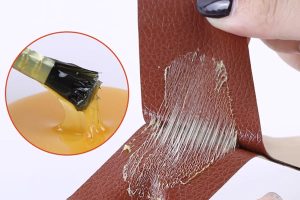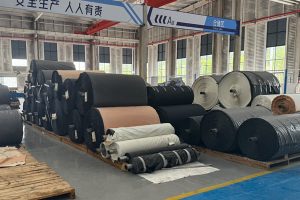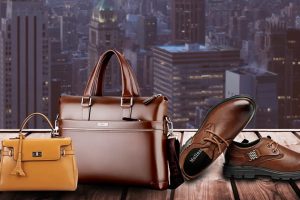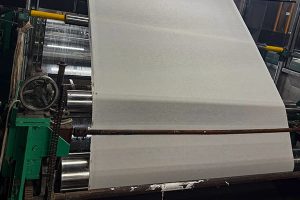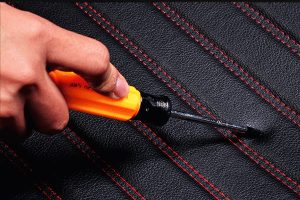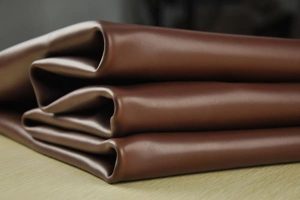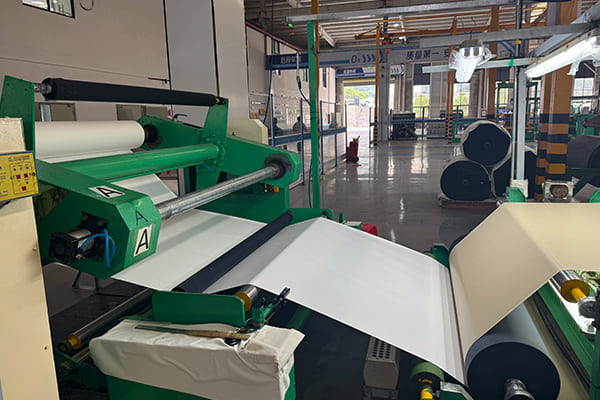
Ever wondered what happens to that old leather jacket you donated or the offcuts from a factory making luxury handbags? Well, they don’t just disappear into thin air! Thanks to the wonders of recycled leather, what was once destined for the landfill is now being transformed into stylish, durable materials fit for your next must-have accessory. Think of it as the ultimate makeover—where leather scraps go from “trash heap chic” to eco-friendly luxury in just a few steps!
Turning Waste into Wonder: The Process Behind Making Recycled Leather
The process of making recycled leather begins by collecting waste leather materials from industrial offcuts, post-consumer leather products, or scraps left over from leather manufacturing. These raw materials are sorted, cleaned, and shredded into small fibers. Once shredded, the fibers are mixed with natural or synthetic bonding agents to create a composite material. This blend is then pressed and treated to form sheets of recycled leather that closely mimic the texture and durability of new leather.
Unlike traditional leather production, which requires large amounts of water and chemicals for tanning, recycled leather manufacturing uses far fewer resources. This makes it an environmentally friendly alternative for creating high-quality products without contributing to further deforestation or pollution.
Eco-Friendly Innovation: A Step-by-Step Guide to Creating Recycled Leather
- Collection: The first step in making recycled leather is gathering waste materials. These can come from post-consumer leather items, unused offcuts from factories, or scrap pieces from old furniture or car interiors.
- Cleaning and Shredding: The collected leather is cleaned to remove any dirt, oils, or contaminants. After cleaning, the leather is shredded into small fibers. This step is crucial to break down the leather into a workable form.
- Mixing with Binding Agents: The shredded fibers are then combined with a bonding agent—either natural (such as latex) or synthetic (like polyurethane)—to create a strong, cohesive material. This mixture is spread into a uniform layer and compressed to form sheets.
- Pressing and Finishing: The recycled leather sheets are pressed under high pressure to ensure that the fibers and bonding agents adhere properly. Once pressed, the sheets are treated with finishing agents to enhance their texture, color, and durability, mimicking the look and feel of genuine leather.
- Cutting and Assembly: After the recycled leather sheets are finished, they are cut into desired shapes and sewn or assembled into various products, from handbags and shoes to furniture and car interiors. The end result is a product that looks like traditional leather but with a significantly reduced environmental impact.
Upcycling Leather Scraps: How to Craft Sustainable Leather Materials
Upcycling leather scraps is a creative and eco-conscious way to give new life to otherwise discarded materials. By repurposing leather remnants from old goods or industrial processes, upcycling minimizes waste and reduces the demand for new leather production. The first step in upcycling is selecting viable leather scraps that are still in good condition. These scraps are cleaned, cut into usable shapes, and often layered or patched together to create a new material.
For smaller items like wallets or phone cases, upcycled leather can be cut and stitched directly without further processing. For larger items like handbags or jackets, the leather may need to be bonded or reinforced before assembly. Upcycling is an artisanal approach to sustainable design, where every piece tells a story of transformation—from waste to wonder.
The Art of Reclaiming Leather: Transforming Waste into Stylish Materials
The journey of creating recycled leather begins with gathering waste leather from a variety of sources, including discarded leather goods, offcuts from manufacturing processes, and post-consumer products. These scraps, which would otherwise end up in landfills, are cleaned, sorted, and prepared for repurposing. This is the art of reclaiming—taking what is considered waste and giving it a second life through innovation.
Once the scraps are collected, they are shredded into smaller pieces and then processed into a pulp-like substance. This pulp is combined with other sustainable materials, such as natural fibers or synthetic binders, to create a new leather-like material. The end product retains the look and feel of traditional leather but with a significantly reduced environmental footprint. It’s a delicate balance between craftsmanship and sustainability, and the result is both functional and fashionable.
Recycling for Fashion: How Recycled Leather is Made from Discarded Scraps
The process of transforming discarded leather scraps into usable material for fashion involves a few key steps. After the scraps are shredded and turned into pulp, they are pressed together using heat and pressure to form sheets of recycled leather. During this process, manufacturers may add additional coatings to enhance the durability and texture of the material. These coatings can vary, with some using natural plant-based solutions to ensure the product remains eco-friendly.
Once the sheets of recycled leather are formed, they can be treated or dyed to suit a variety of design needs. The versatility of recycled leather makes it suitable for creating everything from bags and shoes to furniture and automotive interiors. The final product is a durable, flexible material that has the aesthetic qualities of leather but is far more sustainable. Fashion brands are increasingly adopting this process to meet the growing demand for environmentally conscious products.
From Scraps to Sustainability: Inside the World of Recycled Leather Production
The world of recycled leather production is rooted in sustainability, aiming to reduce the environmental toll of leather manufacturing. Traditional leather production often involves harmful chemicals and contributes to deforestation due to cattle farming. Recycled leather offers an alternative, diverting waste from landfills and reducing the need for new resources.
Production facilities dedicated to recycled leather often prioritize eco-friendly practices, such as using water-based adhesives and minimizing the use of harmful chemicals in the treatment process. This not only benefits the environment but also ensures that the final product is safe for consumers. Additionally, by reclaiming leather scraps, manufacturers can significantly reduce the amount of waste generated in the fashion and manufacturing industries.
Conclusion:
The journey from discarded leather scraps to a stylish, sustainable product is a testament to the power of innovation and eco-conscious design. By reclaiming waste materials and transforming them into high-quality leather alternatives, recycled leather is reshaping the fashion and manufacturing industries. This process not only reduces the environmental burden of traditional leather production but also gives consumers the option to choose products that are both beautiful and responsible.
As the demand for eco-friendly materials continues to grow, recycled leather is proving that sustainability doesn’t mean compromising on style or functionality. From upcycled handbags to car interiors, this material is driving a revolution in circular fashion and green manufacturing. So, the next time you choose recycled leather, remember that you’re not just making a purchase—you’re making a statement about the future of sustainable design. Waste is no longer the end of the story; it’s just the beginning.


